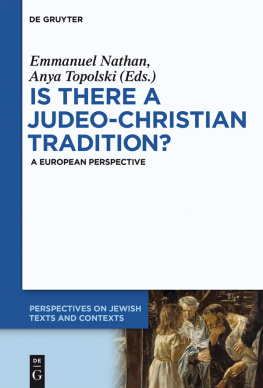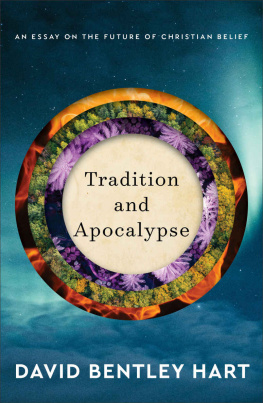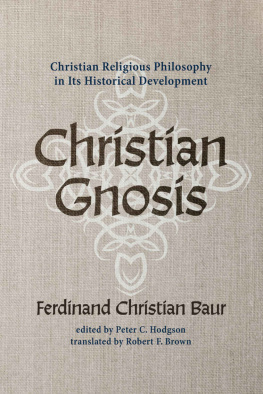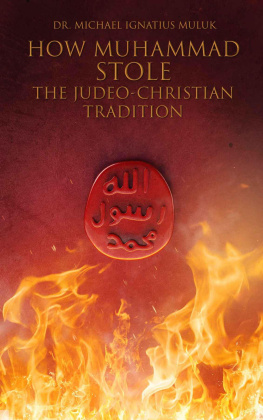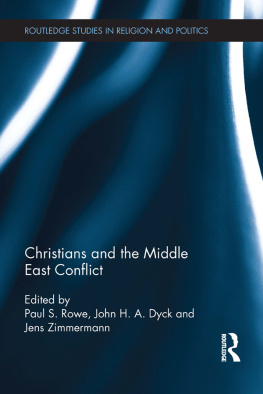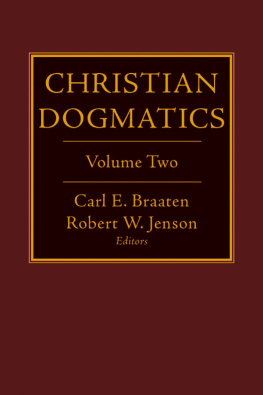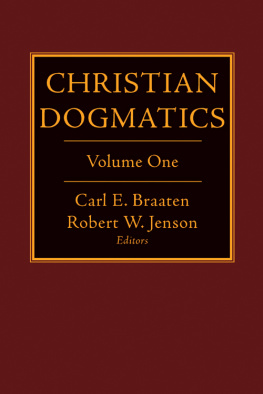Guide

Is there a Judeo-Christian Tradition?
Perspectives on Jewish Texts and Contexts

Edited by
Vivian Liska
Editorial Board
Robert Alter, Steven E. Aschheim, Richard I. Cohen, Mark H. Gelber,
Moshe Halbertal, Geoffrey Hartman, Moshe Idel, Samuel Moyn,
Ada Rapoport-Albert, Alvin Rosenfeld, David Ruderman, Bernd Witte
Volume 4

Volume inspired by the international workshop Is there a Judeo-Christian tradition? as part of the UCSIA/IJS Chair for Jewish-Christian Relations, organized by the Institute of Jewish Studies of the University of Antwerp and the University Centre Saint Ignatius Antwerp (UCSIA).

ISBN 978-3-11-041647-3
e-ISBN (PDF) 978-3-11-041659-6
e-ISBN (EPUB) 978-3-11-041667-1
ISSN 2199-6962
Library of Congress Cataloging-in-Publication Data
A CIP catalog record for this book has been applied for at the Library of Congress.
Bibliographic information published by the Deutsche Nationalbibliothek
The Deutsche Nationalbibliothek lists this publication in the Deutsche Nationalbibliografie; detailed bibliographic data are available on the Internet at http://dnb.dnb.de.
2016 Walter de Gruyter GmbH, Berlin/Boston
Cover image: bpk /Hamburger Kunsthalle / Elke Walford
www.degruyter.com
Acknowledgments
On 12 and 13 February 2014, the Institute of Jewish Studies (IJS) and the University Centre Saint Ignatius Antwerp (UCSIA) jointly organized a two-day international workshop at the University of Antwerp, Belgium, entitled Is there a Judeo-Christian tradition? This conference was organized as part of the annual UCSIA/IJS joint Chair for Jewish-Christian Relations 2013-2014. Instead of one scholar holding the chair for that academic year (as had been done annually up to that point since 2008-2009), both institutes decided to invite a number of scholars to examine and question the assumption of a shared Judeo-Christian tradition from a variety of interdisciplinary perspectives. We are grateful to the directors of both institutes, Prof. Dr. Vivian Liska (IJS) and Prof. Dr. Jacques Haers, sj (then director of UCSIA), for taking the lead on this venture. In addition to their input, the conference would not have been possible without the expert organizational help from Mr. Jan Morrens (IJS) and Ms. Barbara Segaert (UCSIA), and of course the invaluable input from the scholars who participated in this workshop in a most dynamic way.
Resulting from this workshop, Vivian approached both of us to produce an edited volume for her series, Perspectives on Jewish Texts and Contexts, published by De Guyter. Since some readers may wonder how this volume is relevant to Judaism today, we offer four possible reasons. First, a careful study of the Judeo-Christian signifier indicates that it should resist a Christian supersession of Judaism, the signifier should not be used as a synonym for Christianity. Second, this study recognizes that Judaism has been an inextricable part of the Judeo-Christian signifier when in Christian western lands. It may not always have been part of the conversation on that signifier, yet as this volume has made amply clear, when Jews have not been part of that conversation, others have stepped in to decide the conversation for them. In many ways, the latter half of the 20th century has seen a conscious attempt by Jewish scholars to rectify and correct this bias. Third, it should not go unsaid that the floating signifier of Judeo-Christian has also resignified Judaism and this has not only been negative. To be sure, Christianity has quite often undervalued and, at some points sought to eradicate, its Jewish roots. Yet rabbinic Judaism has from its inception been in a reciprocal dialogue with Christianity (and, when living in Islamic lands, with Islam). As such it should not be forgotten that Christianity and Islam have been Judaisms other and both these religious traditions can impact Judaism (and have done so) also for the better. Fourth, and finally, examining the Judeo-Christian signifier up close has revealed that neither side of that hyphen harbours a stable category. That is to say, neither Judaism nor Christianity is one stable, homogenous, category. There are Judaisms and Christianities. Vive les differences!
We were also very grateful that Vivian allowed us free rein, as the volumes editors, to conceptualize the volume into the shape it now has. From the outset, we were quite clear not simply to produce a conference proceedings volume, but rather a book dedicated to exploring the signifier Judeo-Christian in greater detail, especially from its rich and turbulent origins on the European continent before it gained currency across the Atlantic in the United States. We produced a book concept, presented it to Vivian and the editorial board, and once accepted proceeded to invite contributors to the volume. We are deeply appreciative to all the contributors who accepted our invitation and, with great generosity of spirit, allowed us to hold them to a rather quick turnaround. As deadlines gathered pace, we were also grateful for the proofreading skills offered by Mr. Jeremy Schreiber on some of the finalized manuscripts. Needless to say, Dr. Ulrike Krauss and Ms. Katja Lehming from De Gruyter were invaluable for their advice and customary professionalism in getting this book to print.
Looking back, much has transpired in the short time that has elapsed from the books conceptualization to finalization. Separated by continents and time zones, we have relied on technology to overcome geographical and temporal distances. We have both marked milestones in our personal and professional lives. Through it all, this book has been the bridge indeed the hyphen that has kept us connected. To have facilitated and fostered a deep conversation on this topic has been our greatest joy and reward.
Emmanuel Nathan and Anya Topolski
Emmanuel Nathan and Anya Topolski
The Myth of a Judeo-Christian Tradition: Introducing a European Perspective
Since the fall of the Iron Curtain there has been a steady rise in the use of the term Judeo-Christian by European theologians, politicians, historians and philosophers. Is it possible that such divergent public figures as Geert Wilders, a right-wing populist politician in The Netherlands, Jacques Derrida, a left-leaning French philosopher, and Pope Emeritus Benedict XVI, use the term Judeo-Christian tradition in the same manner? Is there any means to pin down the meaning of this term as it is now being used in Europe? Or is this term, which has achieved considerable currency throughout Europe both popular and scholarly, a shibboleth as was claimed by Mark Silk in his 1984 Notes on the Judeo-Christian Tradition in America (Silk 1984, 65). Silk was responding to Arthur Cohens American-based analysis of this term in The Myth of the Judeo-Christian tradition (Cohen 1971, original essay 1957). Cohen decried the use and abuse of the term Judeo-Christian Tradition in North America in the post-Shoah decades. He was quite explicit with regard to his thesis.
And it is here that we can identify the myth. Jews and Christians have conspired together to promote a tradition of common experience and common belief, whereas in fact they have joined together to reinforce themselves in the face of a common disaster before a world that regards them as hopelessly irrelevant, and meaningless. The myth is a projection of the will to endure of both Jews and Christians, an identification of common enemies, an abandonment of millennial antagonisms in the face of threats which do not discriminate between Judaism and Christianity. (Cohen 1971, xix)

